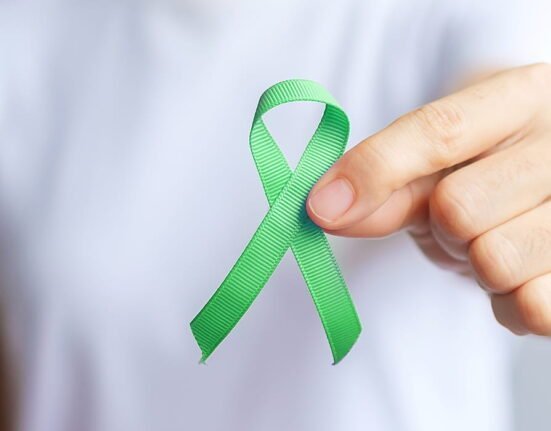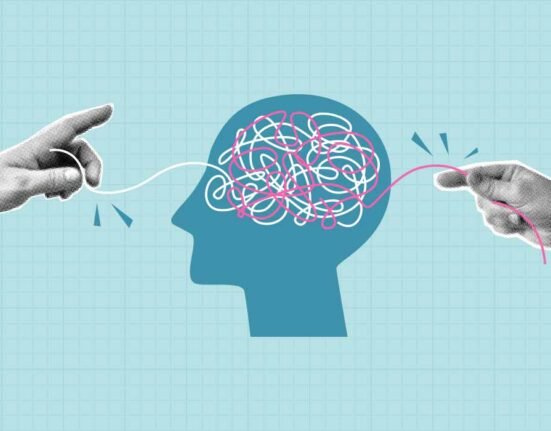Rejection is a normal, hurtful situation that elicits emotional pain, self-doubt, and even social banishment. For the majority, the fear of rejection becomes such an immobilising force that it bars personal development, whether in social affairs, the workplace, or artistic endeavours. The evolutionary biology and social psychology perspectives hold that the fear of rejection generally stems from our wanting to be accepted by our social group.
Rejection Therapy steps into the limelight as a form of mental therapy aimed at desensitising the individual to this fear by exposing him or her more and more to those situations where rejection is imminent, if not probable. With exposure, over time, rejection becomes less ominous, and it instils emotional toughness, self-assurance, and more equitable interpersonal relationships.
Read More: How To Deal with Rejection? Insights from an Expert
What Is Rejection Therapy?
Rejection Therapy is a voluntary psychological exercise in which one actively pursues situations where they are most likely to be rejected. The practice was made famous by Canadian businessman Jason Comely in 2010, who designed a game whose intent was to get rejected at least once a day. The idea is based on the exposure therapy model under cognitive behavioural therapy (CBT), which treats anxiety by progressive exposure of the patient to the feared object so that it ceases to cause distress.
The “therapy” component, while not being clinically established in each instance, utilises the practice of behavioural desensitisation to guide individuals to realise that rejection is not degrading nor hurtful by nature. It is, rather, an exercise in self-discovery and emotional maturation. Rejection, as psychologist Guy Winch (2014) points out, engages the same areas of the brain as does physical pain, which serves to justify the emotional appeal and worth of means to protect against it.
Read More: Rejection Does Not Mean the End of Life
Psychological Basis and Theoretical Framework
The theoretical basis of rejection therapy is supported by Cognitive Behavioural Therapy (CBT) and exposure therapy. Exposure therapy is an empirically supported treatment that is applied for the treatment of phobias, anxiety disorders, and PTSD (Foa & Kozak, 1986). Rejection therapy uses this concept and puts the individual in situations of rejection, thus derelativizing them, destigmatising them, and decreasing the associated anxiety.
Another theory that can be applied here is psychological inoculation, which posits that exposing someone to frequent doses of small aversive stimuli (such as rejection) toughens them in the long run. Participants subjected to moderate levels of stress in 2016 by Jamieson et al. performed and coped better than those protected from any type of stress, indicating that exposure to a measure of social risk could toughen someone emotionally.
Goals and Mechanisms of Rejection Therapy
Rejection Therapy operates on four fundamental processes:
1. Desensitisation
Systematic exposure to rejection environments reduces emotional sensitivity and fear response intensity.
2. Cognitive Reframing
Trainees learn to reinterpret rejection as not a failure but an expected, frequently positive outcome.
3. Behavioural Activation
People are encouraged to behave despite fear, which can enhance self-efficacy and mastery.
4. Growth Through Feedback
Rejections may provide feedback at times, and people can adjust requests, goals, or social styles. By these means, the treatment breaks up the conditioned correlation of rejection and inadequacy to a more positive and objective definition of rejection.
Practical Applications in Personal Development
Rejection Therapy is typically applied as a self-help resource to develop resilience, social skills, and confidence. It is frequently employed to overcome anxiety related to dating, public speaking, and social fear. In a widely-covered example, business owner Jia Jiang issued a “100 Days of Rejection” challenge where he requested outrageous or ridiculous things (such as whether a passing stranger would allow him to plant flowers in his lawn or for a refill on a quick food burger).
Streaming his experiments online, Jiang claimed to experience a sudden fear reduction and a remarkably high rate of acceptances, contrary to his expectations. His experience was subsequently adapted into a TED Talk and the book Rejection Proof (2015). An empirical 2019 work by Kouchaki and Smith, published in the Journal of Experimental Psychology, established that individuals tend to systematically underestimate the likelihood of their requests being accepted. This “underestimation bias” reinforces fear of rejection. Rejection Therapy can overcome this bias based on experiential evidence that rejection is not necessarily inevitable.
Applications in Clinical and Coaching Settings
Although still not mainstream as an accepted psychotherapy device, Rejection Therapy is applied by coaching, corporate training, and cognitive behaviour interventions. Clinical Psychology Rejection therapy drills have been employed for use in application by other therapists with clients in client sessions with clients with social anxiety, avoidant personality, or low self-esteem.
Through the use of “experiments” with rejection exercises, one’s affective response is tracked, one’s hostile cognitions challenged and disconfirmed, and avoidance control internalised. This also aligns with Acceptance and Commitment Therapy (ACT) practice, where action is taken irrespective of distress.
Career Coaching and Leadership Development
Rejection Therapy is applied to entrepreneurship and leadership development to foster a growth mindset and risk acceptance. Rejection and failure are the new normal in startup economies, and such training enables entrepreneurs to withstand investor rejection, user abandonment, and public humiliation. According to a 2020 meta-analysis of Harvard Business Review, emotional resilience was identified as a key leadership trait, and rejection only enhanced this capability.
Social and Cultural Applications
Rejection Therapy has also been used in cross-cultural communication and intercultural training. Fear of rejection is amplified by cultural norms in those cultures that place a very high premium on social harmony and “saving face” (e.g., East Asian cultures). Rejection tolerance training can eliminate this fear and improve work and personal assertiveness.
There are some positive trends in education, with educational institutions employing rejection challenges to students, especially in areas such as marketing or journalism, where phoning up and cold-calling are fundamental skills. Such treatment is low-cost and can enhance the confidence and resiliency of students.
Online and Digital Changes
There are more online self-help resources, rejection therapy interventions, and online support groups available to help treat rejection conditions. Gamification applications deliver a daily practice of rejection with tracking of improvement and psychoanalysis. Online forums like Reddit’s “Rejection Therapy” forum enable sharing and exchanging rejection-related stories, comments, and making rejection occurrences seem like the norm.
This computerised extension has reached its maximum accessibility and convenience of feasibility, particularly for those people with restricted access to formal mental health care. But variation in safety and quality of internet-based rejection tasks requires caution.
Limits and Risks of Rejection Therapy
Rejection Therapy, although with possible multiple benefits, also has certain flaws and dangers. Emotional Risk Rejection is not standardised. An immediate “no” from a stranger is not equivalent to rejection by a loved one or family member. Without proper emotional balancing, repeated or excessive rejections may exacerbate feelings of worthlessness, especially in individuals with preexisting mental conditions of depression or PTSD. A 2021 study by Zadro et al. in Social Psychology and Personality Science found that repeated social exclusion strongly affected mood and self-esteem, particularly in social anxiety-prone individuals.
1. Misapplication and Misinterpretation
There is a danger of reducing Rejection Therapy to a game with the lack of introspective self-reflection. Multiple users are concerned about the external process of rejection than with the internal process of development. Others might engage in unjust or improper rejection exercises that invade individuals’ boundaries or make them uncomfortable. Authorities state that without monitoring, rejection therapy will more than likely reinforce the adverse thought (“See, I am unworthy”) instead of disconfirming it. People perform it best under controlled settings or in contemplative counselling.
2. Not a Substitute for Therapy
For individuals with deep trauma, social anxiety, or more severe relational issues, Rejection Therapy alone is not sufficient. People can use Rejection Therapy together with evidence-based formal therapy, but they should not substitute it for such therapy. Qualified mental health professionals will be more effective in treating rejection sensitivity’s root cause, such as attachment issues or emotional child abuse.
3. Ethical and Cultural Sensitivities
Rejection Therapy needs to be done with situational sensitivity and with cultural sensitivity. What is acceptable in a culture can become unacceptable or even offensive in another. For example, direct asking in conservative cultures or business settings can elicit reputational cost instead of therapeutic benefit. Power, race, and gender also contribute to the reception of and response to rejection. People may respond differently to a male showing risky rejection behaviour in a social environment than to a female or a member of a marginal group. Therefore, practitioners need to contextualise the intervention so that they address each person’s situation.
Integrating Rejection Therapy with Other Modalities
People make the best use of Rejection Therapy when they couple it with reflective techniques like journaling, mindfulness, or cognitive restructuring. Rejection activities may be incorporated into CBT worksheets or self-compassion techniques to allow the individual to work through their experience internally in a constructive way. For example, after a rejection activity, individuals may reflect on the following:
- What was I hoping would happen?
- What happened?
- How did I feel before it happened, during the process of it happening, and following the occurrence?
- What does it indicate about my assumptions?
- These observations serve to ground the emotional learning gained from each experience.
Conclusion
Rejection as a Mode of Growth Rejection Therapy redescribes one of the most painful human experiences as a process of transformation. In rejection, people reclaim power from it, exposing themselves to emotional maturation, resilience, and honesty. While not a one-size-fits-all solution, it is a functional, mainstream solution for those who are able and willing to break the stranglehold of fear and live more truthfully. Context, intentionality, and self-awareness are, as with all types of psychological intervention, paramount. Rejection hurts, but in the hurt lies the call to become.
FAQS
1. Is Rejection therapy a new intervention in the field?
Rejection Therapy is not a new type of psychological intervention; it serves as a self-help strategy designed to help people develop coping skills and handle adverse situations in the best possible manner.
2. What makes Rejection Therapy unique?
Rejection Therapy allows an individual to cut off the fear of rejection at its base. It allows individuals to understand and overcome the aspect of rejection and the resulting outcomes of fear and sadness from the same.
3. Where exactly is rejection therapy used?
People use rejection therapy more prominently in areas where resilience building is crucial and developing coping skills is vital. It is not an exact clinical therapy method, but self self-help game method used for personal development.
References +
Comely, J. (2010). Rejection Therapy: The Game. [Self-published].
Foa, E. B., & Kozak, M. J. (1986). Emotional processing of fear: Exposure to corrective information. Psychological Bulletin, 99(1), 20–35. https://doi.org/10.1037/0033-2909.99.1.20
Jamieson, J. P., Mendes, W. B., Blackstock, E., & Schmader, T. (2016). Turning the knots in your stomach into bows: Reappraising arousal improves performance on the GRE. Journal of Experimental Social Psychology, 46(1), 208–212. https://doi.org/10.1016/j.jesp.2009.08.015
Jiang, J. (2015). Rejection Proof: How I Beat Fear and Became Invincible Through 100 Days of Rejection. Harmony Books.
Kouchaki, M., & Smith, I. H. (2019). Seeing the good in the bad: Underestimating others’ willingness to accept requests. Journal of Experimental Psychology: General, 148(7), 1200–1211. https://doi.org/10.1037/xge0000630
Winch, G. (2014). Emotional First Aid: Healing Rejection, Guilt, Failure, and Other Everyday Hurts. Plume.
Zadro, L., Williams, K. D., & Richardson, R. (2021). How low can you go? Chronic ostracism lowers the threshold for social pain. Social Psychological and Personality Science, 12(2), 207–215. https://doi.org/10.1177/1948550619884562
Harvard Business Review. (2020). Emotional resilience: A critical leadership skill. Harvard Business Publishing. https://hbr.org/
Reddit. (n.d.). Rejection Therapy Subreddit. Retrieved July 10, 2025, from https://www.reddit.com/r/rejectiontherapy/













Leave feedback about this